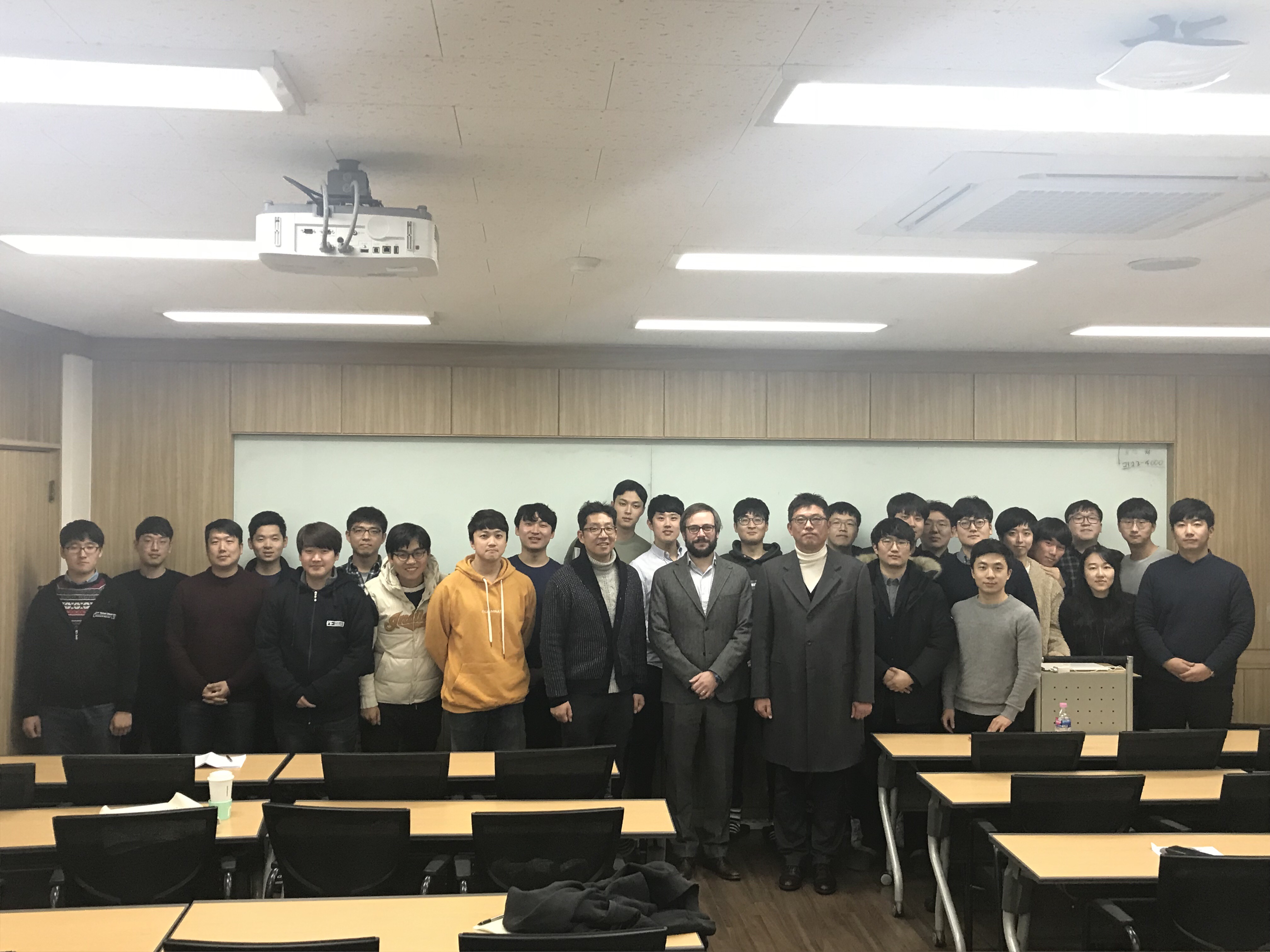News
Andrea Benigni 교수 초청 강연
2017.11.30

개최일시 : 2017년 11월 30일 목요일
개최장소 : 연세대학교 제 2공학관 B701호
세미나 제목 : Modeling and Simulation Challenges for Future Energy Systems
강연자 : Andrea Benigni / University of South Carolina, USA
초청자 : 전기전자공학과 교수 신용준
발표 초록 :
The monitoring and control of future power system are expected to be characterized by the distribution of functions and by the dependence on communications. Distributed monitoring and control appear because of the intrinsic features of new resources (generation and storage), because of the participation of loads in the energy management and because of the need for fast, local reactivity for dynamic control and protection. Given the finer granularity of the controllable energy entities, and given the natural variability of some renewable sources, the sensitivity to individual load variation is greater than in traditional systems. Furthermore, the future energy grid is expected to incorporate electrical, gas and heat networks, to achieve maximum usage of the available energy in every form, and storage capacity particularly in thermal form.
From a system level point of view the coupling of such diverse systems (energy and communication, electrical, gas and heat) and related technologies (variety of sensors, actuators, controllers) create an unprecedented design challenge. In particular, physical devices should be tested in the complexity of the environment in which they will operate, as the standardized laboratory tests do not permit the observation of the actual influences to and from the environment and other devices.
As mentioned before future power system will be characterized by the distribution of control and monitoring functions, and by the remote coordination of its components. This leads to an increasingly relevant role of the communication infrastructure and to a heavier dependence of the performance of the entire system on the performance of the communications. Effects such as time delay, packet loss, packet corruption, disconnections, packet re-ordering, jittering, etc. may affect the timely, stable reaction of power components and control. Conversely the operating mode of the power components affects the traffic, delay, etc. of the communication network.
Mismatches are to be expected between the models used in the design process and the field conditions and between the model of the designed device and the real device. Hence, physical realizations must be tested in most realistic settings at the greatest possible extent prior to deployment. In this context incremental prototyping tools have to be considered a fundamental tool to support the development of new products. As consequence real-time simulation, Hardware in the Loop and Power Hardware in the Loop technique are expected to play a fundamental role.

